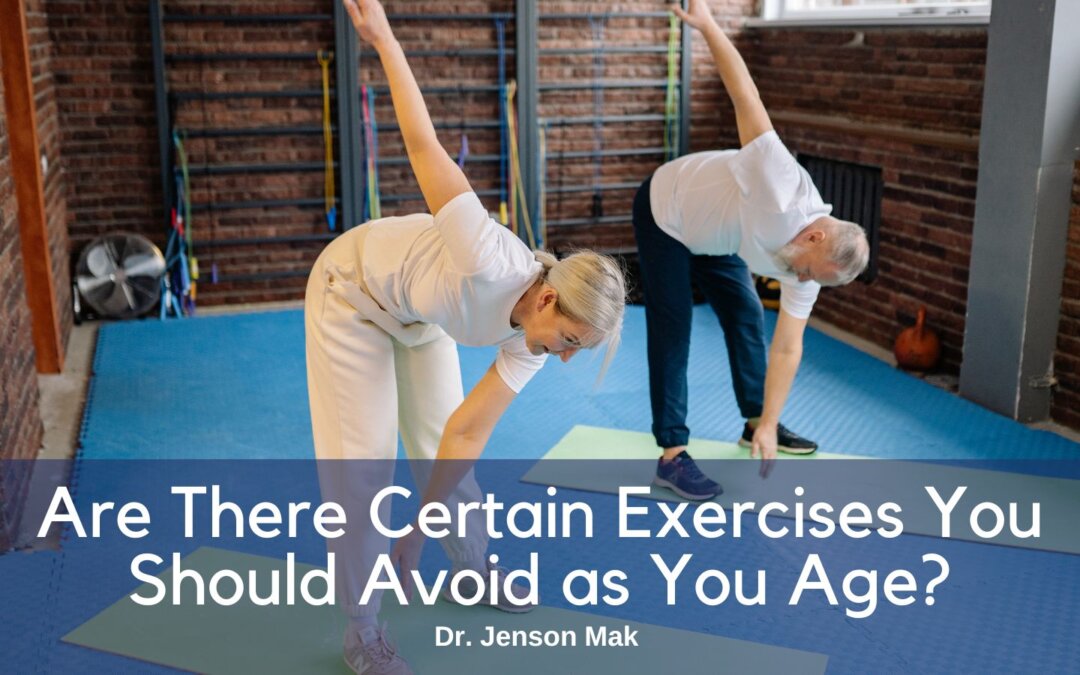As we age, it is essential to maintain an active lifestyle to promote physical and mental well-being. Regular exercise has been shown to offer numerous health benefits for individuals of all ages. However, as we grow older, our bodies undergo changes that may necessitate adjustments to our exercise routines. While exercise remains crucial, it is important to be aware of certain exercises that may carry higher risks or be less suitable for older individuals.
Considerations for Aging Bodies:
As we age, our bodies experience natural flexibility, muscle mass, and bone density declines. Joint stiffness, reduced balance, and decreased cardiovascular endurance are also common.
Exercises to Approach with Caution:
High-impact activities: Exercises involving repetitive jumping or pounding on the joints, such as running or intense aerobics, may strain aging joints excessively. Instead, consider lower-impact activities like walking, swimming, or cycling, which provide cardiovascular benefits with less stress on the joints.
Heavy weightlifting: While strength training is beneficial for maintaining muscle mass and bone density, heavy weightlifting can strain aging joints and increase the risk of injury. Focus on using lighter weights with proper form and consider exercises that target multiple muscle groups, such as bodyweight exercises, resistance bands, or using weight machines with controlled movements.
Spine-stressing movements: Certain exercises that significantly strain the spine, such as heavy squats or overhead presses, may not be suitable for everyone, especially those with back problems. Opt for exercises that engage the core without excessive spinal compressions, such as planks, gentle yoga, or Pilates.
High-intensity interval training (HIIT): while effective for improving cardiovascular fitness, HIIT workouts can be intense and may place excessive stress on aging hearts and joints. If you enjoy high-intensity workouts, consider modifying them by decreasing the intensity or duration of the intervals and incorporating longer rest periods.
Inflexible stretching: As we age, our muscles and tendons become less pliable, making intense stretching routines potentially harmful. Avoid forceful or ballistic stretching and focus on gentle stretching exercises that improve flexibility without risking injury, such as yoga or Tai Chi.
Exercise Alternatives:
While some exercises may need to be cautiously approached as we age, it is crucial to emphasize that exercise is still highly beneficial for older individuals. Consider incorporating the following alternatives into your fitness routine:
Balance exercises: Incorporating exercises that improve balance, such as tai chi or yoga, can help prevent falls and maintain stability.
Low-impact aerobics: Engage in activities like swimming, water aerobics, or cycling to improve cardiovascular health without straining the joints.
Strength training: Perform resistance exercises using lighter weights, resistance bands, or weight machines to maintain muscle mass and bone density.
Flexibility exercises: Gentle stretching routines, yoga, or Pilates can improve flexibility and promote joint mobility without excessive strain.
Regular exercise is essential for individuals of all ages, including older adults. While specific exercises should be cautiously approached as we age, it is necessary to tailor exercise routines to our bodies’ changing needs. By choosing appropriate exercises and modifying intensity, older individuals can enjoy the benefits of physical activity while minimizing the risk of injury. Always consult a healthcare professional or a qualified fitness trainer to design an exercise program that suits your needs and abilities.

